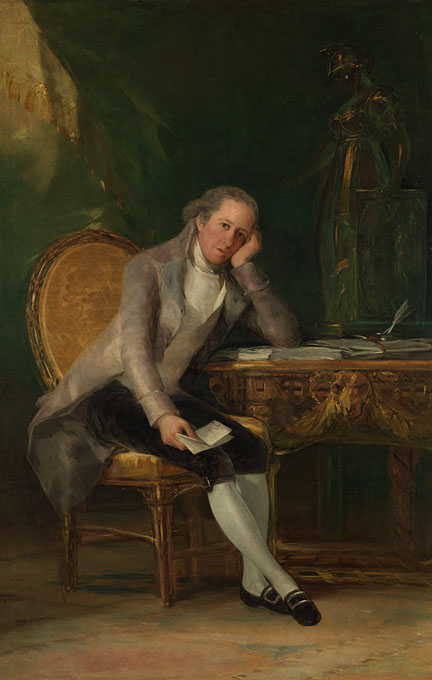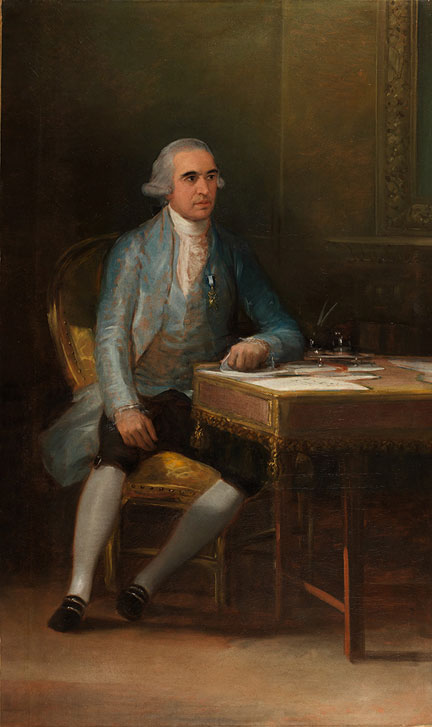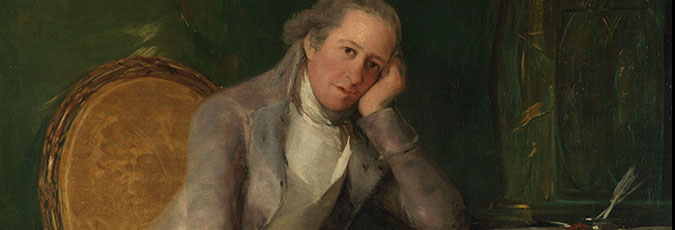The Spanish Enlightenment
‘Gaspar Melchor de Jovellanos’ and ‘Francisco de Saavedra’
If Goya was ever part of a political movement it would have been in the years 1797 and 1798, when many of his friends and patrons were given significant roles on the political stage in an attempt by the Spanish monarchy to show support for change and reform. In 1797, Gaspar Melchor de Jovellanos, one of the foremost intellectuals of the Spanish Enlightenment, was recalled from exile to become Minister of Grace and Justice; and Francisco de Saavedra, an able and liberal-minded economist was given the post of Minister of Finance. To commemorate this moment of optimism, Goya portrayed them sitting at their desks attending to their administrative duties.
Goya breaks the formality usually found in such commissions by forcing us to compare and contrast the two politicians. Jovellanos takes on the pose often associated with the personification of melancholia, leaning his head on his hand. He is portrayed as a thinker, in deep contemplation. By contrast, Saavedra sits up, impatient to get on with his paperwork. In place of a luxurious writing table he has a more functional example, the kind that can be folded up and easily moved. Instead of a thinking man we have a man of action.
Although the two portraits no longer hang side by side – one is at the Prado Museum, Madrid, and the other at the Courtauld Institute, London – this exhibition presents a rare opportunity to recreate the dynamics Goya had originally intended to convey.

© Madrid, Museo Nacional del Prado

© The Samuel Courtauld Trust, The Courtauld Gallery, London

